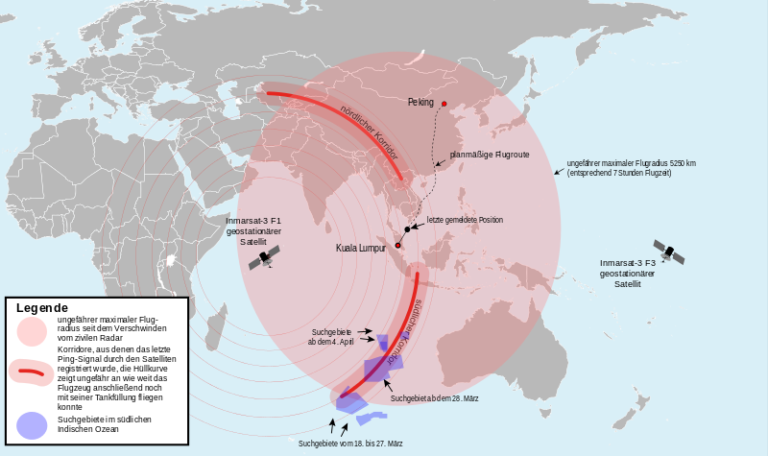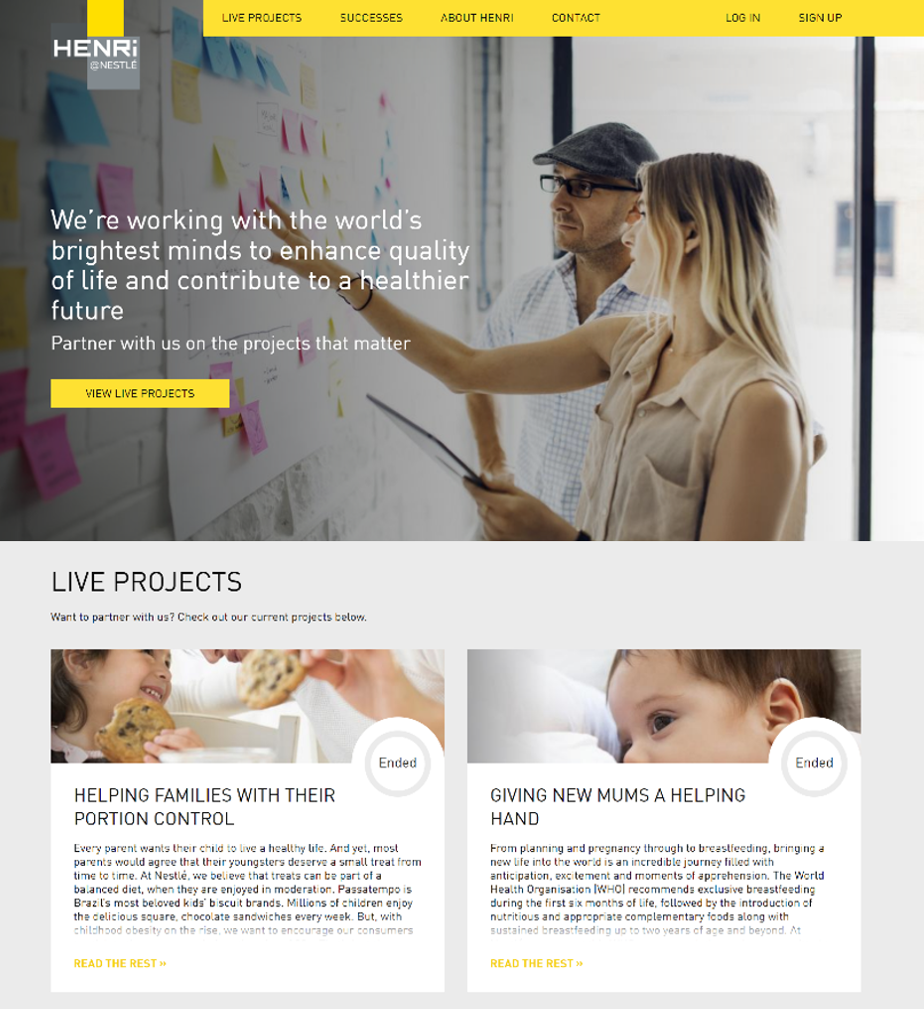The acclaimed educational reformer John Dewey once said, “every great advance in science has issued from a new audacity of imagination”. Today, this audacity is reflected in the rising influence of citizen driven innovation and science – that is, the collaboration of volunteer non-scientists with professional scientists in collecting data and analyzing it to resolve real-world issues.
The citizen science movement is growing rapidly on a global scale, synergizing professionals from diverse scientific fields and volunteers from around the world. As the general public’s interest in science continues to increase, professional scientists and researchers develop innovative tools to effectively engage crowds.
In the current disruptive business landscape, where innovation is more important than ever, organizations need to look to alternative sources to gather ideas and solutions in order to remain successful. As such, businesses are beginning to recognize the potential citizen science has for supporting open innovation initiatives. After all, citizen science and open innovation methodologies share numerous similarities. Both have the potential to gather powerful insights and break the insular corporate mindset that often stifles growth.
Even large-scale corporations – including Coca-Cola, Nasa, and Google – are beginning to adopt the citizen science approach. Such companies have implemented online challenges that incentivise the general population to apply their scientific acumen (even if not formally attained) to develop innovative solutions and ideas. The result is a more open and democratized approach to knowledge gathering, informed by the scientific process and honed to address specific issues within a given timeframe.
This article will explore why major companies and scientific organizations are increasingly seeking the contributions of citizen scientists. We’ll cover why the citizen science approach is useful for breaking down restrictive corporate silos, saving money, and seeking out untapped reservoirs of genius. Throughout, we’ll touch on how open innovation management software – such as that offered by Qmarkets – can help leverage the collective intelligence of citizen scientists to drive business results.
But first, let’s take a brief look at how citizen science has developed over the years.
The Evolution of Citizen Science
Although some in the scientific community have raised concerns about the validity and/or applicability of crowdsourced discoveries, grassroots citizen science has been successfully practiced for over a century. In 1890, the American National Weather Service launched the Cooperative Observer Program – a still ongoing project that supports long-term climate studies by reporting national meteorological changes in real time, as recorded by volunteers.
„Businesses are beginning to recognize the potential citizen science has when it comes to gathering powerful insights and breaking the insular corporate mindset that often stifles innovation.“
Today, the digitalization of information has created many new opportunities not just for scientists. Companies, individuals, NGOs and other groups are now able to collaborate with the greater public, thanks to this revolutionary technology. Real-time technologies, artificial intelligence, and big data capabilities exponentiate the amount of information that can be collected for both short and long-term projects. The speed at which this information can be processed can also be dramatically increased via digitalization.
Citizen science and crowdsourcing are being increasingly recognized as invaluable tools for solving large-scale problems that transcend borders. The Crowdsourcing Week article A Thousand Eyes Are Better Than Two by Shay Hershkovitz details how international naval and air force authorities have implemented crowd-based initiatives in their search for the missing MH 370 airliner. By harnessing the power of decentralized crowds (and recognizing where data science and human-based analysis intersect), searchers are able to gain a far broader set of data than would be possible by only employing dedicated professionals.

As we will see, breaking down restrictions and opening research to non-professionals can prove invaluable for driving crucial data.
How Citizen Science and Gamification Can Unlock Human Potential
Fundamentally, citizen science addresses two core concerns that many companies face when approaching innovation. Managers want to gain ideas from engaged, forward-thinking staff who are not boxed into a restrictive corporate mindset. They also want to glean potentially groundbreaking ideas from external thinkers, but don’t want to open their innovation workshops to unreliable or mavericks whose ideas could prove disastrous. A well-regulated citizen science initiative can help to both engage internal and external staff, as well as refine external ideation efficiently.
An example of citizen science unlocking human potential is epitomized by the Earthwatch Institute. This organization engages external researchers by ‘demystifying’ the scientific process, making it accessible (thus eliminating the chance of receiving unreliable feedback), and then incentivizing citizen scientists worldwide to tackle the environmental challenges most relevant to them. In 2015, citizen scientists associated with Earthwatch gathered crucial data that assisted the Canadian parks department in applying more effective forest fire treatments – thus protecting native grasslands and wildlife populations. By making scientific methods less obscure and distant (siloed off) from the general population, Earthwatch thus secured the data that drove significant change.
Citizen driven innovation and science is also proving effective for innovation in the medical sector. Zooniverse – the world’s largest people-powered research hub – presents a prime example of this. Currently, the company has more than 1.5 million registered citizen scientists from around the world. Thanks to these contributors, researchers from various organizations have made important new discoveries and published numerous research papers.
Zooniverse’ Worm Watch Lab project, launched in 2013, demonstrates how citizen science can rapidly yield major results that would take excessive amounts of time within a traditional (or purely internal) research paradigm. Essentially, the project entails citizen scientists observing online videos of worms in a laboratory and hitting a key on the computer whenever they observe a worm laying an egg. The research gleaned from this provides greater insight into the workings of the human brain, as well as how genes effect behavior.

A major reason for the success behind the Worms Watch project is that it adds a gamification component to citizen science. As the name suggests, gamification is the process of adding game-play elements to non-game scenarios. In the case of Worms Watch, the citizen scientist is engaged with a particular challenge (to click the right key whenever a worm lays an egg), an approach that Zooniverse staff identified as being “strangely addictive”.
So how can corporations, government departments, and research organizations use gamification to unlock human potential – that is, without expending excessive time and resources? The most efficient way is to implement open innovation management software that offers built-in gamification capabilities. For example, Qmarkets’ products include flexible gamification functionality, which incentivizes participants to contribute their ideas in exchange for rewards. These rewards can range from online points to tangible prizes for the best ideas submitted.
Addressing Fundamental Needs – The Power of Open Innovation
Today, leading global companies use open innovation methods to gather input from different groups of people. Open innovation can be used to crowd-source trending ideas, as well as keep up to date with incremental product innovations. Often, companies with an open innovation focus do not leverage gamification the way open science organizations do – that is, in a participatory democracy style, with direct, committed, meaningful input from volunteers motivated by gameplay elements.
Breaking down restrictions and opening research to non-professionals can prove invaluable for driving crucial data.
A good example of this is the HENRi@Nestle project, which is driven by Qmarkets’ cutting-edge idea management system. The project gives the public a chance to join various projects, without offering any monetary incentives and with subtle (yet effective) gamification elements.

Part of what makes the HENRi@Nestle project so effective is that it taps into the human need for recognition and prestige via creative pursuits (top-tier factors in Maslow’s hierarchy of needs). Well-designed gamification can speak to such needs and substantially increase people’s motivation to join in large-scale projects, however large organizations are not currently employing gamification as effectively as the citizen science community.
How Can Corporates Harness the Power of Citizen Science?
Although citizen science can present a host of challenges, it also offers the chance to reap major ROI by involving your staff and/or clients in meaningful, value-adding activities. Companies must also take into account confidentiality, security, and integration requirements when implementing citizen science to their open innovation strategy.
Implementing the citizen science methodology to your open innovation strategy is an excellent way to tap into the wisdom of the crowds. By spearheading projects that will allow regular people to get in touch with their inner-scientist and contribute data about the things that most matter to them, you can drive results and discover new ways to overcome strategic challenges. All you need are the resources, a clear focus, an innovation management platform to serve as your mission control, and gamified elements to incentivize contribution. With those elements in place, your citizen science project will be ready for blast off.
To learn how Qmarkets can help your organization harness the power of open innovation, or organize a free demo, don’t hesitate to get in touch with us today!
Originally published on the Above + Beyond Blog in two parts (Part 1, Part 2).


